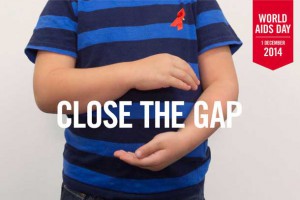
In a message on the Day, marked annually on 1 December, Mr. Ban explained that with some 35 million people worldwide living with HIV – 19 million of who do not even know they have the virus – “tremendous” gains made over the years in fighting the virus remain very fragile.
“The legacy of the AIDS response is already apparent as we confront Ebola in West Africa. We know that medical systems alone are not enough to provide robust health care,” Mr. Ban said.
“[These] are all lessons we have learned in the AIDS response that are being applied across the board, including in our discussions on the post-2015 development agenda,” the UN chief explained.
He also commended the commitment of world leaders this year to end AIDS epidemic by 2030 with a campaign called Fast-Track. A report on that goal released last week outlined a set of targets that would need to be reached by 2020, including 90-90-90: 90 per cent of people living with HIV knowing their HIV status; 90 per cent of people who know their HIV-positive status on treatment; and 90 per cent of people on treatment with suppressed viral loads.
“We must leave no one behind,” the Secretary-General said, referring to regions and people who may not have access to prevention, treatment and support services.
For instance, in Eastern Europe, Central Asia and the Middle East the number of AIDS cases is increasing mostly because of stigma, discrimination and punitive laws.
World AIDS Day, launched in 1988 as the first-ever global health day, also spotlights this year the fact that worldwide two out of three children who need HIV treatment do not get it.
Young women are particularly vulnerable in countries with high HIV prevalence. And the essential work of community systems and support organizations often lacks support.
But progress on AIDS eradication is accelerating, the UN chief said. Almost 14 million people worldwide are now accessing HIV treatment. New HIV infections have been reduced by 38 per cent since 2001. And some 1.16 million infections have been prevented among new-born babies by providing essential antiretroviral medicines.
The world is also on track to provide antiretroviral therapy to 15 million people by 2015 and to eliminate mother-to-child transmissions within the next few years.
“We have been able, together, to transform tragedy into opportunity…to break the conspiracy of silence…reduce the price of medicine…break the trajectory of the AIDS epidemic…and save millions of lives,” said Michel Sidibé, Executive Director of the Joint UN Programme on HIV/AIDS (UNAIDS).
Now it is time to “break the epidemic for good,” he said.
“We have a short five-year window of opportunity to reach the people who are being left behind, people who have been denied their rights – young women and adolescent girls, men who have sex with men, migrants, prisoners, sex workers and people who inject drugs,” said Mr. Sidibé.
For this to happen, health systems must be strengthened to provide essential services to those who badly need them. Redoubling such efforts will fast-track actions and close the gap people who have access to prevention, treatment, care and support and those who are being left behind.
Mr. Sidibé also reflected how this year’s Ebola outbreak “reminds us of the beginning of the AIDS epidemic.”
“People were hiding and scared. Stigma and discrimination were widespread. There were no medicines and there was little hope,” he remembered.
That has changed thanks to global solidarity, social mobilization and the hard work of civil society, Mr. Sidibé added.
As a part of today’s worldwide events, the UN World Health Organization (WHO) released new guidelines on providing antiretrovirals (ARVs) as an emergency prevention following HIV exposure, and on the use of the antibiotic co-trimoxazole to prevent HIV-related infections.
The guidelines provide advice on providing ARVs as post-exposure prophylaxis (“PEP”) for people who have been exposed to HIV – such as health workers, sex workers, and survivors of rape.
In 2013, WHO published consolidated guidelines on the use of antiretrovirals that promote earlier, simpler and less toxic interventions to keep people healthier for longer, and to help prevent HIV transmission. A growing number of countries with a high burden of HIV have adopted these guidelines. In 2013, a record 13 million people were able to access life-saving ARVs.
But too many people still lack access to comprehensive HIV treatment and prevention services. The 1 December supplement to the WHO consolidated guidelines on the use of antiretroviral drugs for treating and preventing HIV infection, released in June 2013, aims to help bridge that gap.

